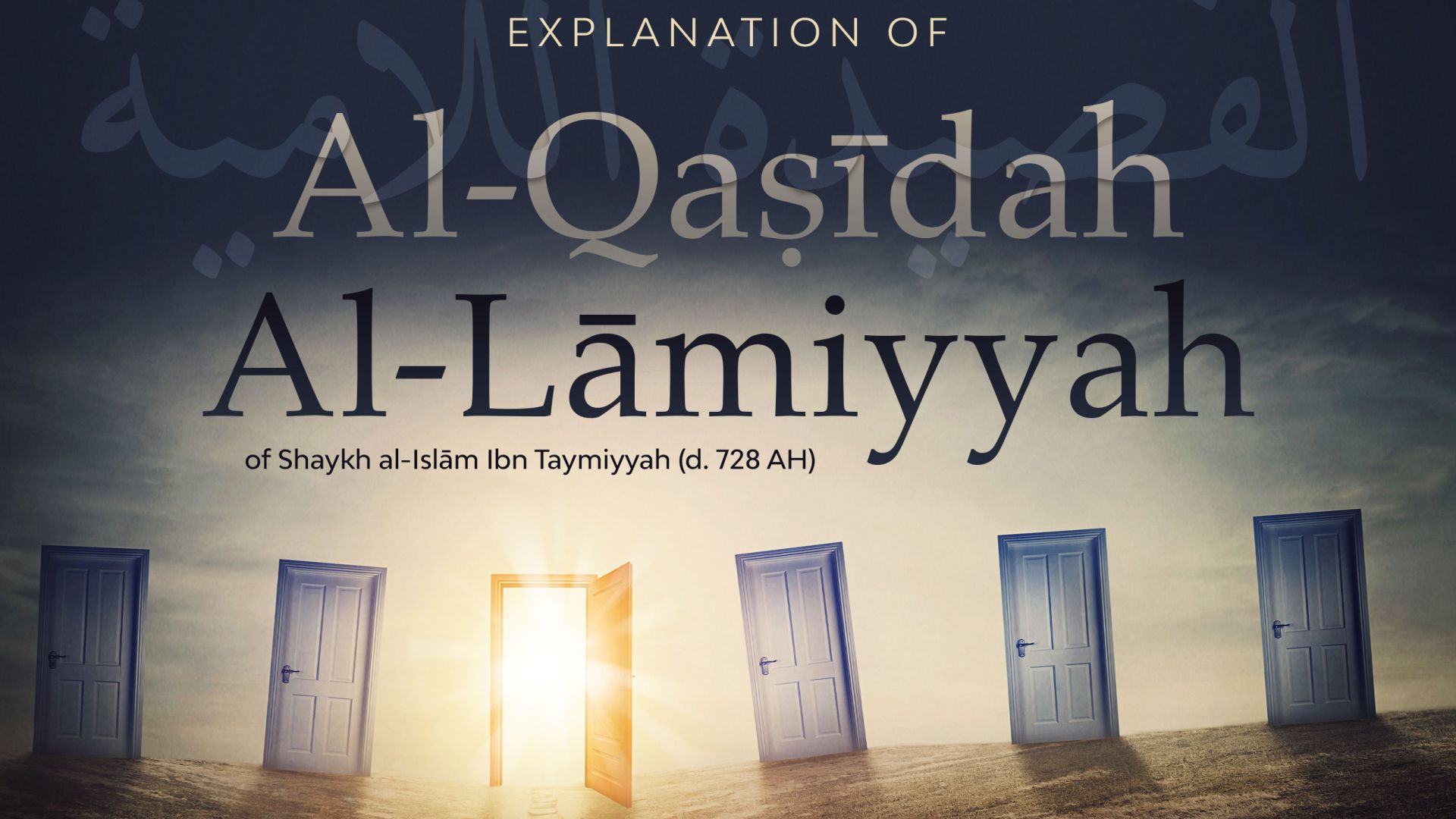The Censure of Taʾwīl


The madh′hab (way) of the Salaf (Pious Predecessors) with regards to the Ṣifāt (Attributes of Allāh) is to affirm them as they are ʿalá dhāhir (with their apparent meaning), negating any tashbīḥ (resemblance) to them, nor takyīf (asking how they are).
Some Statemenets from the Salaf Concerning the Attributes of Allāh and their Consensus Concerning the Falsehood of Taʿweel
[1]: Imām al-Awzāʿī (d.157H) – raḥimahullāh- said:
‘‘I asked az-Zuhree and Makhool about the āyāt pertaining to the Sifaat (Attributes of Allāh), so they said: Leave them as they are.’’ 1
[2]: al-Walīd Ibn Muslim (d.194H) – raḥimahullāh – said:
‘‘I asked Mālik, al-Awzāʿī, Layth Ibn Sa’d and Sufyān al-Thawrī – rahimahumullāh – concerning the reports related about the Attributes, so they all said: Leave them as they are, without asking how.’’ 2
[3]: Imām Aḥmad Ibn Ḥanbal (d.241H) – raḥimahullāh – said:
‘‘These aḥādīth should be left as they are…We affirm them and we do not make any similitude for them. This is what has been agreed upon by the Scholars.’’ 3
[4]: Nuʿaym Ibn Hammaad (d.228H) – raḥimahullāh – said:
‘‘Whosoever makes tashbīh (resemblance) of Allāh to His creation has committed kufr (disbelief), and whosoever denies what Allāh has described Himself with has also committed kufr. Indeed, all that Allāh has described Himself with, and what His Messenger (ṣallallāhu ʿalayhi wa-sallam) has described Him with, then there is no tashbīh in it at all.’’ 4
[5]: Imām al-Tirmidhī (d.279H) – raḥimahullāh- said:
‘‘It has been stated by more than one person from amongst the People of Knowledge about such aḥādīth, that there is no tashbīh (resemblance) to the Attributes of Allāh, and our Lord – the Blessed, the Most High – descends to the lowest heavens every night. So they say: Affirm these narrations, have faith (īmān) in them, do not deny them, nor ask how. The likes of this has been narrated from Mālik Ibn Anas, Sufyān al-Thawrī, Ibn ʿUyaynah and ʿAbdullāh Ibn al-Mubārak, who all said about such aḥādīth, ‘‘Leave them as they are, without asking how.’’ Such is the statement of the People of Knowledge from Ahl al-Sunnah wal-Jamāʿah. However, the Jahmiyyah oppose these narrations and say: This is tashbīh! However, Allāh – the Most High – has mentioned in various places in His Book, the Attributes of al-Yad (Hand), as-Sama’ (Hearing) and al-Bʿasr (Sight) – but the Jahmiyyah make ta‘weel of these āyāt, explaining them in a way, other than how it is explained by the People of Knowledge. They say: Indeed, Allāh did not create Ādam with His own Hand – they say that ‘Hand’ means that Power of Allāh.’’ [5]
[6]: al-Khaṭṭābī (d.388H) – raḥimahullāh – said:
‘‘The madh′hab (way) of the Salaf (Pious Predecessors) with regards to the Sifaat (Attributes of Allāh) is to affirm them as they are ʿalá dhaahir (with their apparent meaning), negating any tashbīh (resemblance) to them, nor takyīf (asking how they are).’’
[7]: Imām as-Saaboonee (d.448H) – raḥimahullāh- said:
‘‘Indeed, the Aṣḥāb al-Ḥadīth (the Scholars of Ḥadīth), [those who held fast to the Book and the Sunnah] – may Allāh protect their lives and shower mercy upon those that have died – bear witness to the Tawḥīd of Allāh and to the Messengership and Prophethood of His Messenger (ṣallallāhu ʿalayhi wa aalihi wa-sallam). They know their Lord – the Mighty and Majestic – by the Attributes which He has spoken of in His Revelation, and by what He has sent down, or testified to, by His Messenger (ṣallallāhu ʿalayhi wa-sallam)…They affirm for Allāh – the Mighty and Magnificent – what He affirm for Himself in His Book, or upon the tongue of His Messenger (ṣallallāhu ʿalayhi wa-sallam). They do not believe in tashbīh (resemblance) to His Attributes from the attributes of the creation. They say: Indeed, He created Ādam with His own Hands, as He – the Most Perfect – textually stated,
‘‘O Iblīs! What prevents you from prostrating to one whom I have created with My own Hands?’’
[Sūrah Saad 38:75]
So they do not distort the words from their context, by carrying the meaning of Yadayn (the two Hands of Allāh) to mean ni’matayn (two bounties) or quwwatayn (two powers) – which is the taḥrīf (distortion) of the Muʾtazilah and the Jahmiyyah – may Allāh destroy them. They do not ask how the Attributes are, nor do they resemble them to their creation…Allāh – the Most High – protected Ahl al-Sunnah from such taḥrīf, takyīf and tashbīh and favoured them with knowledge and understanding.’’ 7
[8]: Qaadee Abū Ya’lā (d.458H) – raḥimahullāh- said:
‘‘The proof for the futility of ta‘weel is that the Companions and those who followed them from the Tābi’īn, understood them (the Attributes) ʿalá dhaahir (upon their literal meaning) – and they did not take recourse to ta‘weel, nor did they move away from the dhaahir meaning. If ta‘weel were permissible, then they would have preceded us in it…’’ 8
[9]: Ibn ʿAbd al-Barr (d.463H) – raḥimahullāh- said:
‘‘Ahl al-Sunnah are agreed in affirming all the Sifaat (Attributes) which are related in the Qurʾān and the Sunnah, having īmān (faith) in them and understanding them ’alal-hʿaqīqah (in a real sense), not ’alal-majaaz (metaphorically). How they are is not to be asked. However, the Jahmiyyah, the Muʾtazilah and the Khawārij all deny them and do not carry them ’alal-hʿaqīqah; claiming that whosoever affirms them has made tashbīh (resemblance) and they claim that whosoever recites them (as they are) is a mushabbih (a person doing tashbīh).’’9
[10]: Ibn Qudāmah (d.620H) – raḥimahullāh – said:
‘‘The way of the Salaf is to have īmān (faith) in the Names and Attributes of Allāh that He has described Himself with in His Revelation, or upon the tongue of His Messenger (ṣallallāhu ʿalayhi wa-sallam) – without increasing, nor decreasing upon it, nor exceeding the limits, nor explaining them (i.e. like the Muʾtazilah), nor making a ta‘weel of them in a way that opposes the dhaahir meaning.’’ 10
[11]: Ibn Taymīyyah (d.728H) – raḥimahullāh- said:
‘‘From īmān (faith) in Allāh is: Īmān in what He described Himself with and with what His Messenger Muḥammad (ṣallallāhu ʿalayhi wa-sallam) described Himself; without taḥrīf and ta‘weel, and without takyīf and tamthīl…’’ 11
Affirming the Sifaat with their Apparent and Real Meanings and a Refutation that the Way of the Salaf was Allegedly Tafweedh
[1]: Rabīʿatur (d.136H) – raḥimahullāh- said:
‘‘Al-istiwá (Allāh’s Ascension) is not unknown, and how (it occurs) is not comprehendible, and from Allāh is the Message, upon the Messenger is to convey, and upon us is to affirm.’’13
[2]: Imām Mālik Ibn Anas (d.179H) – raḥimahullāh – said:
‘‘Al-istiwá is known, and how is unknown, and to have īmān (faith) in it is obligatory, and to question it is an innovation.’’ Then he said to the questioner, ‘‘I do not think, except that you are an evil man.’’ So he ordered him to be expelled. 14
[3]: Imām al-Bukhārī (d.256H) – raḥimahullāh – said:
‘‘Mujāhid (d.104H) said about istiwaa: Rising over the throne.’’ 15
[4]:Ibn Jarīr al-Tabarī (d.310H) said concerning the statement of Allāh – the Most High:
‘‘The Most Merciful made istiwá over the Throne.’’ Meaning, Rising above and ascending.’’ 16
[5]: Imām Abū al-Ḥasan al-Ashʿarī (d.324H) – raḥimahullāh- said:
‘‘If it is said: Why do you deny His statement,
‘‘Do you not see that We have created for them what our Own Hands have created.’’
[Sūrah Yaa Seen 36:71]
And His statement:
‘‘Whom I have created with My Own Hands.’’
[Sūrah Ṣād, 38:75]
are majāz (metaphorical)? To him it is said: The ruling concerning the Speech of Allāh – the Mighty and Majestic – is that it is taken upon its dhaahir (apparent) and hʿaqīqah (real) meaning. Nothing is moved from its dhaahir meaning to a majaaz (metaphorical) one, except with a proof…Likewise, the statement of Allāh – the Mighty and Majestic, ‘‘Whom I have created with My Own Hands,’’ its dhaahir and hʿaqīqah meaning is affirming the Yadayn (two Hands of Allāh). So it is not permissible to alter it from the dhaahir meaning of Yadayn to that which our opponents claim, except with proof…Consequently, His statement, ‘‘Whom I have created with My Own Hands.’’ It is obligatory to affirm two hands for Allāh – the Most High – in its hʿaqīqah (real) meaning, not with the meaning of ni’matayn (two bounties of Allāh).’’ 17
[6]: al-Khaṭṭābī (d.388H) – raḥimahullāh – said:
‘‘The madh′hab (way) of the Salaf (Pious Predecessors) with regards to the Sifaat (Attributes of Allāh) is to affirm them as they are ʿalá dhaahir (with their apparent meaning), negating any tashbīh (resemblance) to them, nor takyīf(asking how they are).’’ 18
[7]: Imām at-Talamankee (d.429H) – raḥimahullāh – said:
‘‘There is ijmāʿ’ (consensus) from Ahl al-Sunnah that Allāh ascended over His Throne bi-Dhaatihi (by His Self)… There is ijmāʿ’ (consensus) from Ahl al-Sunnah that Allāh ascended over His Throne ʿalá hʿaqīqah (in a real sense), not ’alal-majaaz(metaphorically).’’ 19
[8]: al-Qaadee Abū Ya’lā (d.458H) – raḥimahullāh – said:
‘‘It is not permissible to repel these narrations – as is the way of a group from amongst the Muʾtazilah. Nor to become pre-occupied with ta‘weel – as is the way of the Ashʿariyyah. It is obligatory to carry them upon their dhaahir meaning; and that the Attributes of Allāh do not resemble anyone from His creation, nor do we have an ʿaqīdah (belief) that there is any tashbīh (resemblance) to them. Rather, [we believe] in what has been reported from our Shaykh and our Imām, Abū ʿAbdullāh Aḥmad Ibn Muḥammad Ibn Ḥanbal, and other Scholars of Aṣḥāb al-Ḥadīth.’’ 20
[9]: al-Khaṭīb al-Baghdādī (d.463H) – raḥimahullāh – said:
‘‘As for Speech about the Attributes, that which is authentically related about them in the Sunnah, then the Salaf – may Allāh be pleased with them all – was to affirm them all as they are, ʿalá dhaahir (upon their apparent meaning); negating any tashbīh (resemblance) to Allāh, and not asking how they are. We do not say that al-Yad (the Hand of Allāh) means His Power, nor that as-Sama’ (Allāh’s Hearing) and al-Bʿasr (Allāh’s Sight) meaning His Knowledge, nor do we say that He has jawaarih (limbs).’’ 21
[10]: Ibn ’Ábdul-Barr (d.463H) – raḥimahullāh – said:
‘‘Ahl al-Sunnah are agreed in affirming all the Sifaat (Attributes) which are related in the Qurʾān amd the Sunnah, having īmān (faith) in them and understanding them ’alal-hʿaqīqah (upon their real meaning), not ’alal-majaaz(metaphorically).’’ 22
[11]: Shaykh ʿAbd al Qādir al-Jeelānee (d.561H) – raḥimahullāh- said:
‘‘It is essential to carry the Attribute of al-istiwá (Allāh’s Ascending) by His Dhaat (Essence) over the Throne. istiwá does not mean sitting and touching – as the Mujassimah and Karraamiyyah say; nor does it mean ’uluww (grandeur and highness) – as the Ashʿariyyah say; nor does it mean isteelā (conquering or dominating over) – as the Muʾtazilah say. None of this is related in the Sharīʿah. Neither has this been related from any of the Salaf al-Ṣāliḥ, from the Companions and the Tābi’īn, nor from the Aṣḥāb al-Ḥadīth (Scholars of Ḥadīth). Rather, it is related from them that they carried al-istiwáwith its apparent meaning.’’ 23
[12]: Imām al-Qurṭabī (d.671H) – raḥimahullāh said:
‘‘Not a single person from the Salaf al-Ṣāliḥ denied istiwá (Allāh’s Ascending) over the Throne to be hʿaqīqah (in a real sense). The reality of its kayfiyyah (how He ascends) is not known. Imām Mālik said that al-istiwáis known, how is not known, and to ask questions concerning it is an innovation.’’ 24
[13]: Shaykh al-Islām Ibn Taymīyyah (d.728H) – raḥimahullāh – said:
‘‘The Sifaat (Attributes) are just like His Dhaat (Self). Thus, just as the Dhaat of Allāh is established hʿaqīqah (in a real sense) – without considering it to be like that of His creation, then likewise His Sifaat are also established hʿaqīqah- without considering them to be like that of the creation.’’ 25
Who is Ahlus-Sunnah Wal-jamāh?
Imām Muḥammad Ibn Ṣāliḥ al-’Uthaymīn – hafiẓahullāh- said:
‘‘So – for example – the Ashʿarīs and the Maatureedees are not considered from Ahl al-Sunnah wal-Jamāʿah in this particular matter (i.e. concerning the Names and Attributes of Allāh). Rather, they oppose what the Prophe (ṣallallāhu ʿalayhi wa-sallam) and his Companions were upon with regards to accepting the Attributes of Allāh – the Most Perfect – upon their hʿaqīqah (real meaning). This is why, whoever says that Ahl al-Sunnah are three groups: the Salafīs, the Ashʿarīs and the Maatureedees – then such a person is indeed mistaken. Rather we say: How can all three be considered Ahl al-Sunnah and they differ with each other? What is there after Truth, except misguidance. How can they all be Ahl al-Sunnah, whilst each one of them refutes the other – this is not possible – except if it is possible to reconcile the opposites. There is no doubt however, that one of them is truly Ahl al-Sunnah – but which one? Is it the Ashʿarīs, the Maatureedees or the Salafīs? Whichever of them agrees with the Sunnah is considered to be Ahl al-Sunnah, whilst whichever of them opposes it is not. So we say: The Salaf are Ahl al-Sunnah wal-Jamāʿah, and this description cannot be true for anyone else other than them. So how can those who oppose the Sunnah be called Ahl al-Sunnah – this is not possible. How is it possible to say Ahl al-Sunnah are of three differing groups, but we say that they are in agreement? So where is the agreement and consensus? Rather, Ahl al-Sunnah wal-Jamāʿah are those who hold on to what the Prophet (ṣallallāhu ʿalayhi wa-sallam) and his Companions were upon, and to the ʿaqīdah (creed) of the Salaf – until the Day of Judgement – and they are the Salafīs.’’ 26
Endnotes:
[1] Related by Imām al-Lālikaa‘ee in Sharḥ Uṣūl al-Iʿtiqād Ahl al-Sunnah wal-Jamāʿah (3/430) and also by Ibn Qudāmah al-Maqdisee in Dhammut-Ta‘weel (p. 18) and the chain of narrators is ḥasan(good).
[2] Related by al-Ājurrī in al-Sharīʿah (p. 314), al-Bayḥaqī in al-Asmāʾ‘ wa-al-Ṣifāt (p. 453) and also in al-Iʿtiqād (p. 118) and the chain of narrators is ḥasan.
[3] Related by Ibn al-Jawzī in Manaaqibul-Imām Aḥmad (p. 155-156)
[4] Related by Imām al-Dhahabī in al-’Uluww (no. 217)
[5] Sunan al-Tirmidhī (3/24)
[6] al-Ghuniyah ’an Kʿalám wa Ahlihi – as quoted in Mukhtasarul-’Uluww (no. 137)
[7] ’Aqīdah Ahl al-Sunnah wal-Jamāʿah Aṣḥāb al-Ḥadīth wal-A‘immah (no. 3)
[8] Ibtaalut-Ta‘weelāt li-Akhbaaris-Sifaat (p. 21)
[9] al-Tamhīd (1/145) of Ibn ʿAbd al-Barr
[10] Dhammut-Ta‘weel (p. 11) of Ibn Qudāmah al-Maqdisee
[11] al-’ʿAqīdahtul-Waasitiyyah (p. 3-4)
[12] What is meant by tafwīḍ – according to Ahlul-Kʿalám (the people of innovated speech and rhetoric) – is: Affirming the wording of the Attributes, but leaving knowledge of their meaning and how the Attribute is, to Allāh. However, the way of the Salafwas to affirm both the textual wording and the meaning of Allāh’s Attributes – in the way that befits Him – whilst refraining from asking questions concerning how the Attributes are; resigning knowledge of that to Allāh.
[13] Related by al-Bayḥaqī in al-Asmāʾ‘ wa-al-Ṣifāt (no. 516) and al-Lālikaa‘ee in Sharḥ Uṣūl al-Iʿtiqād Ahl al-Sunnah wal-Jamāʿah (no. 665), Ibn Taymīyyah said in Majmūʿ al-Fatāwá (5/365), ‘‘It is established from Rabīʿah.’’ He also said in al-Hamawiyyah (p. 80), ‘‘Al-Khallāl narrated it with an isnād (chain of narrators), all of whom are thiqaat(precise and reliable).’’
[17] al-Ibānah ’an Uṣūlid-Diyaanah (p. 133). The ascription of this book to Abū al-Ḥasan al-Ashʿarī, and that it was his final book concerning ʿaqīdah (creed) – has been testified to by a number of Scholars, and from them: al-Ḥāfiẓ Ibn ’ʿAsākir in Tabyeenul-Kadhibul-Muftaree (p. 152), al-Bayḥaqī in al-Iʿtiqād (p. 31), Imām al-Dhahabī in al-’Uluww (no. 276) and Ibn al-’Imaad in Shadharaatudh-Dhahab (p. 303).
[18] al-Ghuniyah ’an Kʿalám wa Ahlihi – as quoted in Mukhtasarul-’Uluww (no. 137)
[19] Related by al-Dhahabī in Siyar Aʿlām al-Nubʿalāʾ‘ (17/566)
[20] Ibtaalut-Ta‘weelāt (p. 4)
[21] al-Kʿalám ’alas-Sifaat (p. 19-20) of al-Khaṭīb al-Baghdādī
[22] al-Tamhīd (7/145) of Ibn ʿAbd al-Barr
[23] al-Ghunyatut-Ṭālibeen (1/50) of ʿAbd al Qādir al-Jeelānee
[24] al-Jāmiʿ li-Aḥkāmil-Qurʾān (18/216)
[25] al-Fatwaa al-Hamawiyyatul-Kubraa (p. 66)
[26] Sharḥul-’ʿAqīdahtil-Waasitiyyah (1/123) of Muḥammad Ibn Ṣāliḥ al-’Uthaymīn

















